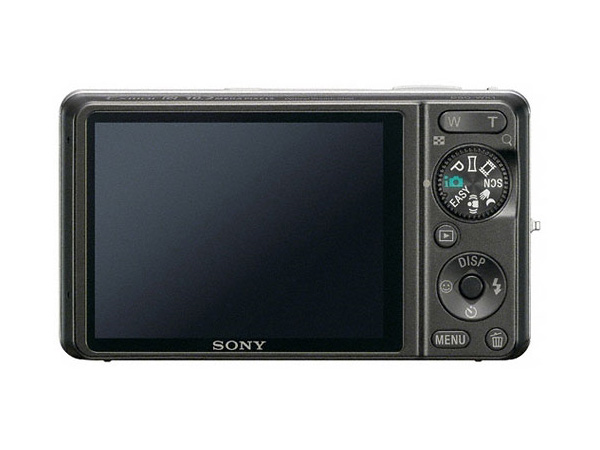 Why You Can Trust CNET
Why You Can Trust CNET Sony Cyber-shot DSC-WX1 review: Sony Cyber-shot DSC-WX1
The WX1 is an excellent compact camera with a great feature set and speedy performance, but mixed photo quality makes it miss the mark.
Design and features
Sony's designers must have gone on their tea break when the WX1 was being drawn up — compared to the Cyber-shot TX1 it's pretty unappealing on the outside. Given the technology inside (the same CMOS Exmor R sensor found on the superzoom HX1 and TX1) is more exciting than what's found in the standard compact camera on the shelves today, it's a shame that the WX1 should look so lacklustre. That said, the 10-megapixel camera feels very well made, sturdy and solid.
The Good
The Bad
The Bottom Line
At the top sit the standard shutter and power button, plus a tiny smidgen of a button that's used to change the shooting mode of the camera between high, medium and low speed burst continuous and automatic bracketing. At the back of the camera is the zoom rocker in a button configuration, above the mode dial which can move between the following modes: intelligent auto, easy, program, sweep panorama (first discussed in our review of the HX1), movie (720p), scene, twilight and anti-motion blur. The 2.7-inch screen is not as nice as that found on the 3-inch touchscreen TX1 but it does the job adequately.

(Credit: Sony)
The lens specifications are rather nice, considering there's a maximum aperture of f/2.4 at the wide end and overall the lens extends to 5x zoom — better than those specs on the TX1. It's also an incredibly wide 24mm, one of the widest lenses on a compact camera available today.
Like the TX1, the WX1 can be used in conjunction with the Party Dock, an autonomous device into which you plug the camera, which will then swivel, pivot and rotate to take photos automatically. The WX1 uses Memory Stick Pro Duo cards and a Lithium-ion battery that are accessed via the base of the camera, near the Party Dock connector and a metal tripod mount. Note that there's no direct HDMI output from the camera.
Performance
The WX1 feels nimble and agile, and fortunately the performance statistics reflect this. It starts up and takes its first shot within 1.95-second. Shutter lag averages out at around 0.3 second which is pretty impressive for a compact camera, and one of the high speed burst shooting modes promises up to 10 frames per second. In practice the WX1 completely lives up to this claim, busting out one (full resolution frame) every 0.1 second.
Sony rates the battery for the WX1 at 350 shots, or 175 minutes of video.
Image and video quality
The WX1 performs fine for a compact camera if you're not too concerned with using images at full magnification. Colours appear natural, if a little undersaturated when compared to both the TX1 and other compacts such as the Canon IXUS 120 IS. The WX1 has a predisposition to blow out highlights though, which does limit its usefulness in outdoor situations in harsh sunlight with strong contrasts between light and shadow.
The Sony WX1's image (top) and the Canon IXUS 120 IS's image (bottom) of the same scene. The Sony's image looks slightly over processed. Note the field of view is slightly different as the Sony has a wider lens. (Credit: CNET Australia)
Lens aberrations, such as barrel distortion, were pleasingly minimal. Considering the 24mm wide-angle maximum opening, this is particularly impressive. Like the TX1 though, the WX1 exhibited a little bit of JPEG over-processing, which shows itself as a smudgy look at full magnification — distinctly different from digital noise at high ISO levels.
We found the WX1 had some difficulty in finding the correct focus when the shutter button was half depressed — this was mostly in macro and short distance focus settings rather than landscape shots. The screen also doesn't do the photos the best justice; when placed side by side with the screen from the IXUS 120 IS, the WX1's screen looked pale and lacked contrast.
A comparison between colour saturation and blue rendition of the WX1 (top) and 120 IS (bottom). (Credit: CNET Australia)
The WX1 really excels in twilight mode though, with this little camera achieving some great shots in low light conditions without flash, like in the example below. This shot was taken at around 7.30pm, at dusk.
Exposure: 1/200, f/5.9, ISO 160 (Credit: CNET Australia)
Video quality is pretty good too, and Sony has enabled the full use of the optical zoom during filming. There's very little evidence of artefacts across the video and sound is fairly good from the in-built microphone.
Conclusion
The WX1 is an excellent compact camera with an excellent feature set and speedy performance, but mixed photo quality makes it miss the mark.


